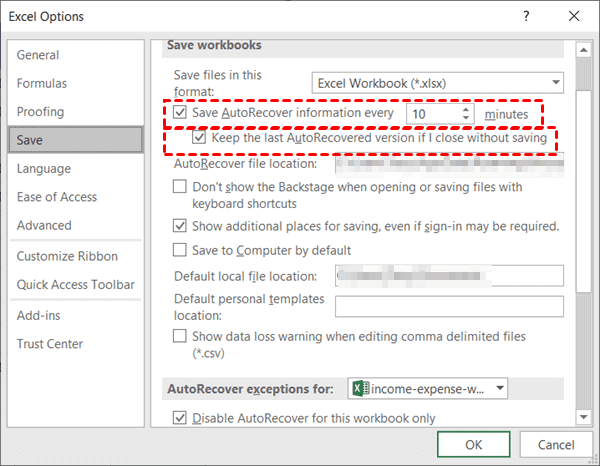Recover Your Excel Sheet Bar: Quick & Simple Guide

Whether it's an accidental drag or a mysterious misclick, we've all been there - the Excel sheet bar, which lists your worksheet names, has suddenly disappeared from your view. Before panic sets in, there's no need to worry. This guide will walk you through recovering your Excel sheet bar quickly and simply, ensuring you get back to your work with minimal disruption.
Why Did My Excel Sheet Bar Disappear?

Before we jump into the fix, understanding why this happens can be helpful:
- Accidental Deletion: You or someone else might have accidentally hidden the sheet tabs.
- Software Settings: Excel’s settings might have been tweaked, either by intention or mistakenly.
- Corrupt File: Sometimes, file corruption could lead to odd behavior in Excel.
Steps to Recover Your Excel Sheet Bar

Fortunately, Excel provides an easy way to restore your sheet bar. Here’s what you need to do:
Step 1: Check the View Option

First, check if the sheet tabs are merely hidden:
- Click on the “View” tab at the top of the Excel window.
- Find the “Window” section.
- Ensure that the “Sheet Tabs” option is checked.
Step 2: Restore via Excel Options

If the view option doesn’t resolve the issue:
- Go to “File” then click on “Options” to open the Excel Options dialog box.
- Click on “Advanced.”
- Scroll down to the “Display options for this workbook.”
- Make sure “Show sheet tabs” is selected.
Step 3: Check for Corrupted File

If your workbook is corrupted:
- Open another Excel workbook to verify if the issue is file-specific.
- If the problem persists in other workbooks, consider repairing your Excel installation.
🔎 Note: If you've recently upgraded or modified your system settings, reverting to a previous state might help. This could apply if Microsoft Office or Windows updates changed how Excel behaves.
Alternative Methods

Here are some alternative methods you can try if the primary solutions don’t work:
Use a New Workbook

- Open a new workbook and manually transfer your data, ensuring the sheet bar is visible in the new file.
- Copy sheets by holding Ctrl while dragging sheet tabs to the new workbook.
Customize the Quick Access Toolbar

- Add the “Unhide Sheet” command to your Quick Access Toolbar for quicker access.
- This might not recover the bar but can help in managing sheets.
| Method | Steps |
|---|---|
| Check View Option |
|
| Excel Options |
|
| Check for Corrupted File |
|

After trying these steps, you should now have your Excel sheet bar back where it belongs, allowing you to navigate through your workbook effortlessly. Remember, Excel is a powerful tool designed to accommodate user needs, often with simple settings adjustments rather than complex troubleshooting.
To wrap things up, recovering a missing Excel sheet bar is a straightforward process. By following the steps outlined, you can quickly restore visibility, ensuring that your workflow remains uninterrupted. Whether it was a case of accidental hiding, a file glitch, or system changes, the solutions provided cater to various scenarios, making your recovery experience smooth and effective. Keep these tips handy, and you'll be well-equipped to handle any similar issues that might arise in the future.
Why did my sheet tabs disappear in Excel?

+
Sheet tabs can disappear due to accidental settings changes, file corruption, or updates to Excel or Windows that modify interface behavior.
Can I recover hidden sheets without showing the sheet bar?

+
Yes, you can use the “Unhide Sheet” command from the “Home” tab or customize your Quick Access Toolbar to have quicker access to this option.
Is there a way to prevent the sheet bar from disappearing again?

+
While you can’t entirely prevent it, you can ensure Excel’s default settings are always applied when opening new workbooks by saving a new workbook with your preferred settings as a template and setting it as the default.
What if none of these methods work to recover my sheet bar?

+
In rare cases where these methods fail, consider trying Excel on a different PC or repairing your Office installation. If the issue is hardware or software-specific, further troubleshooting might be required.



